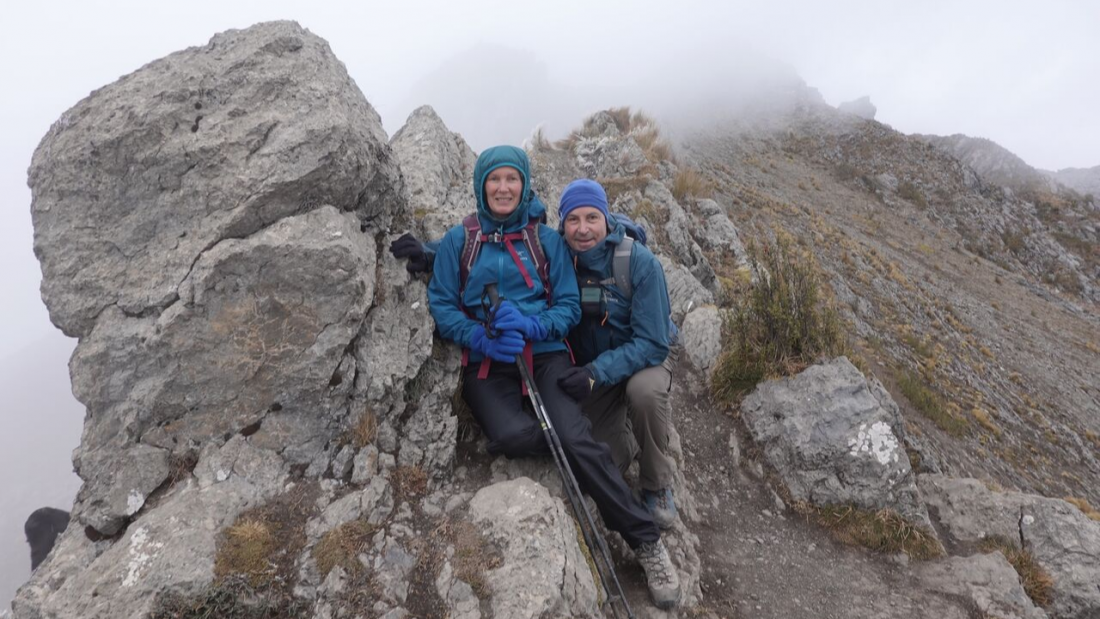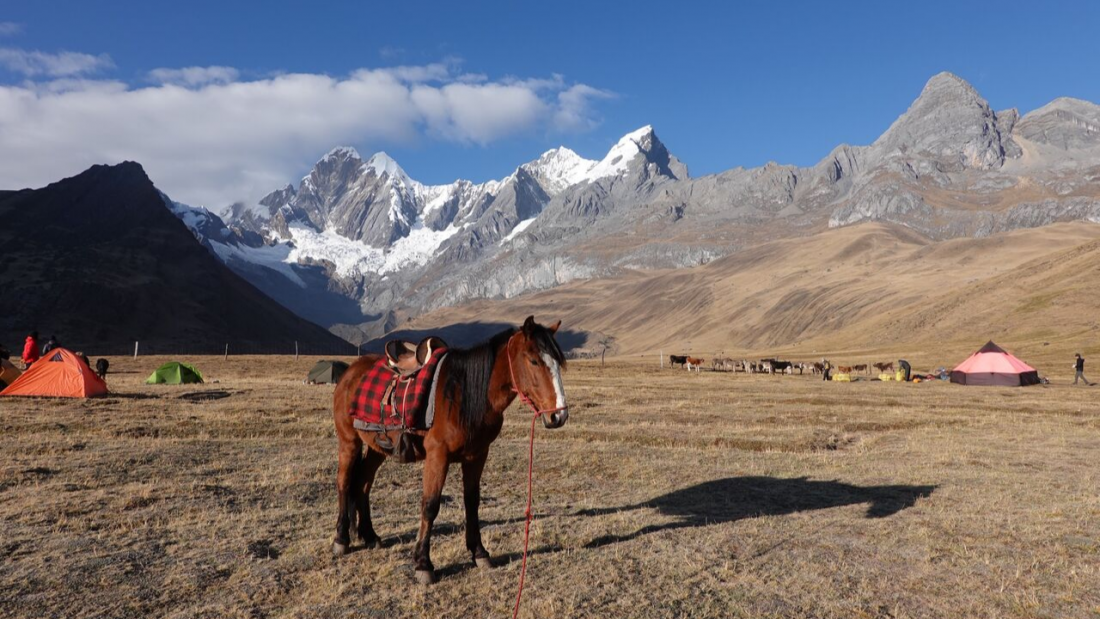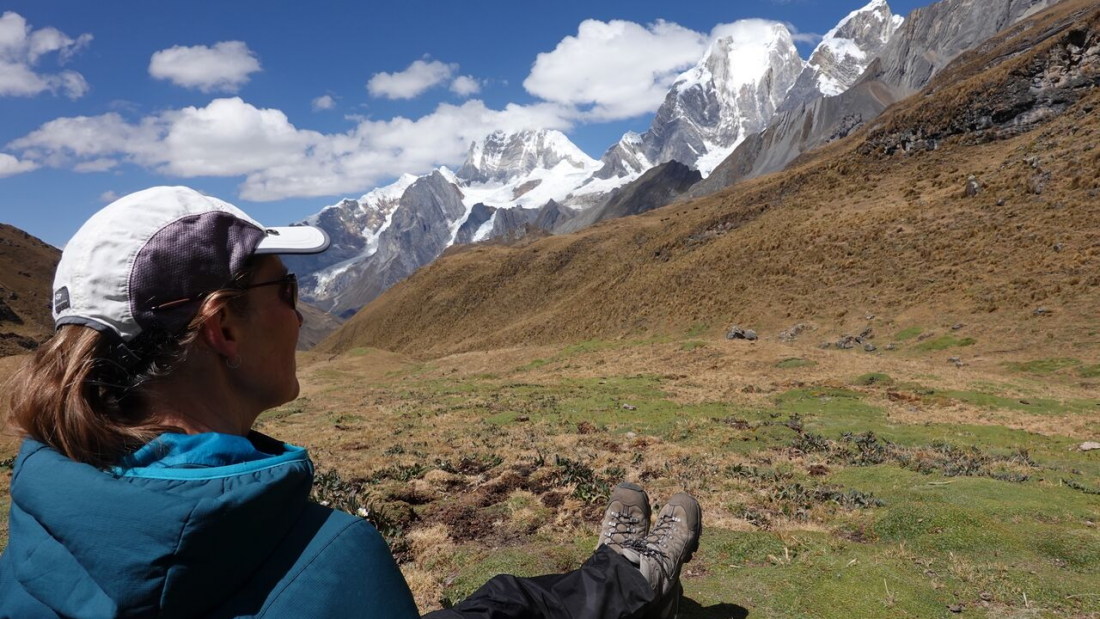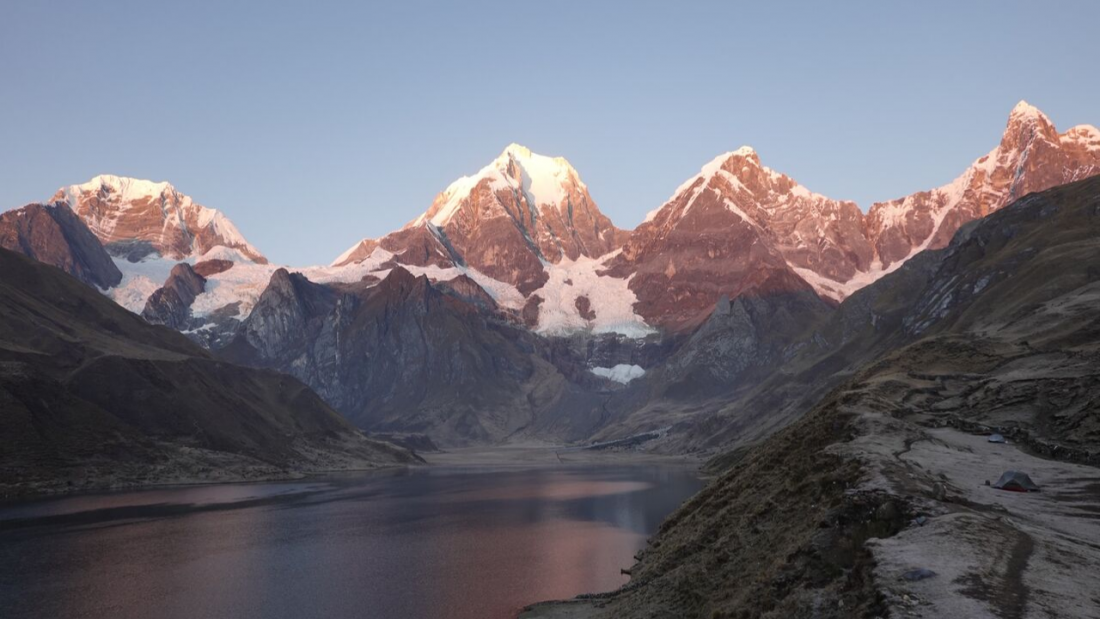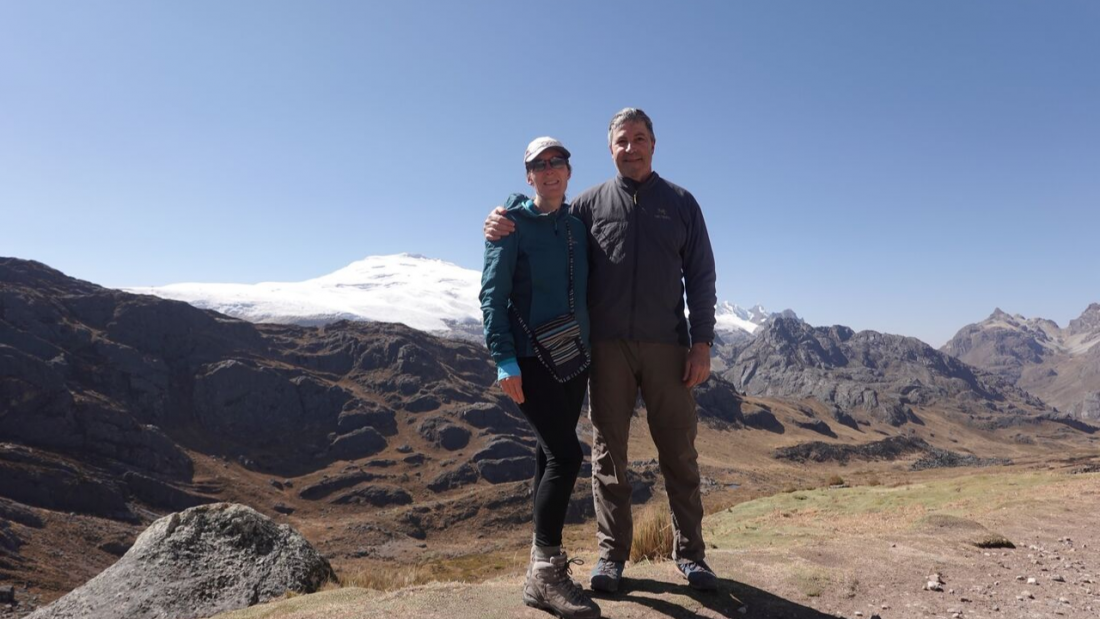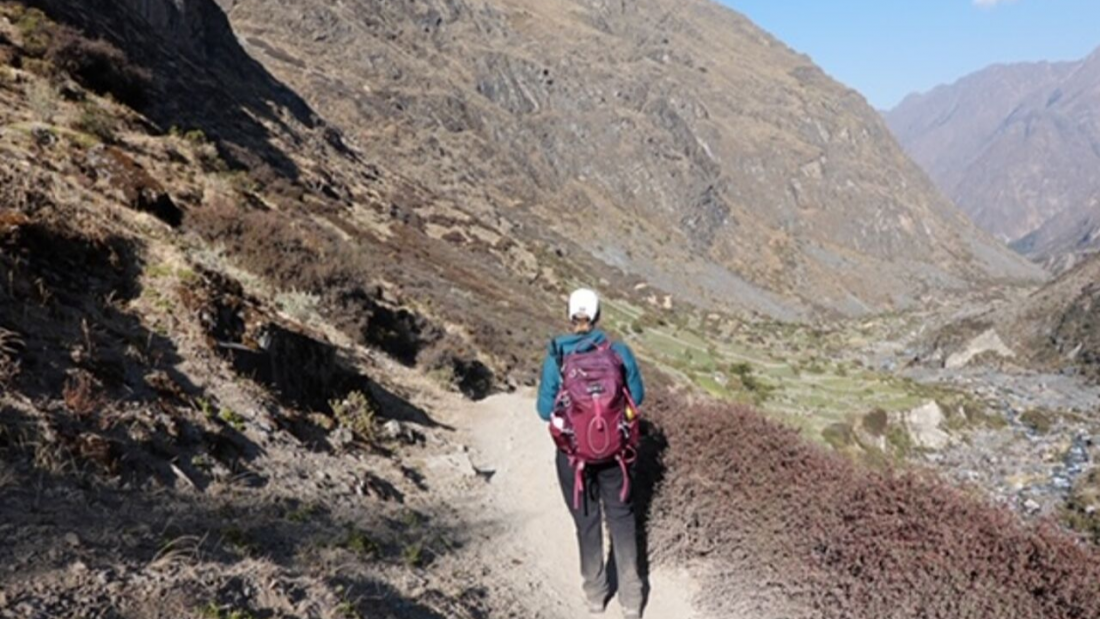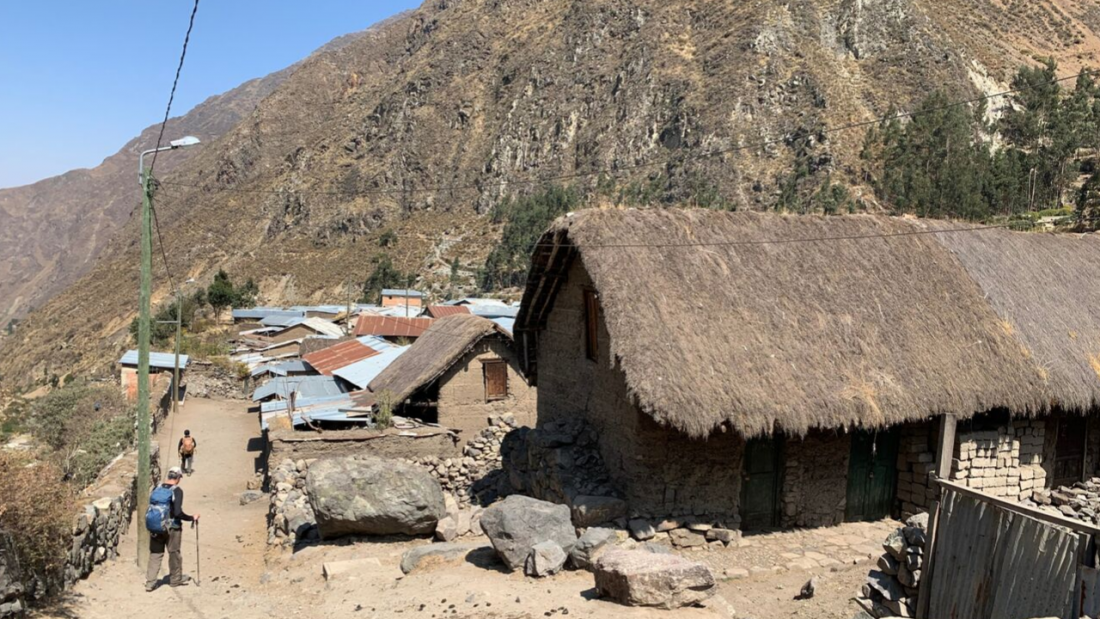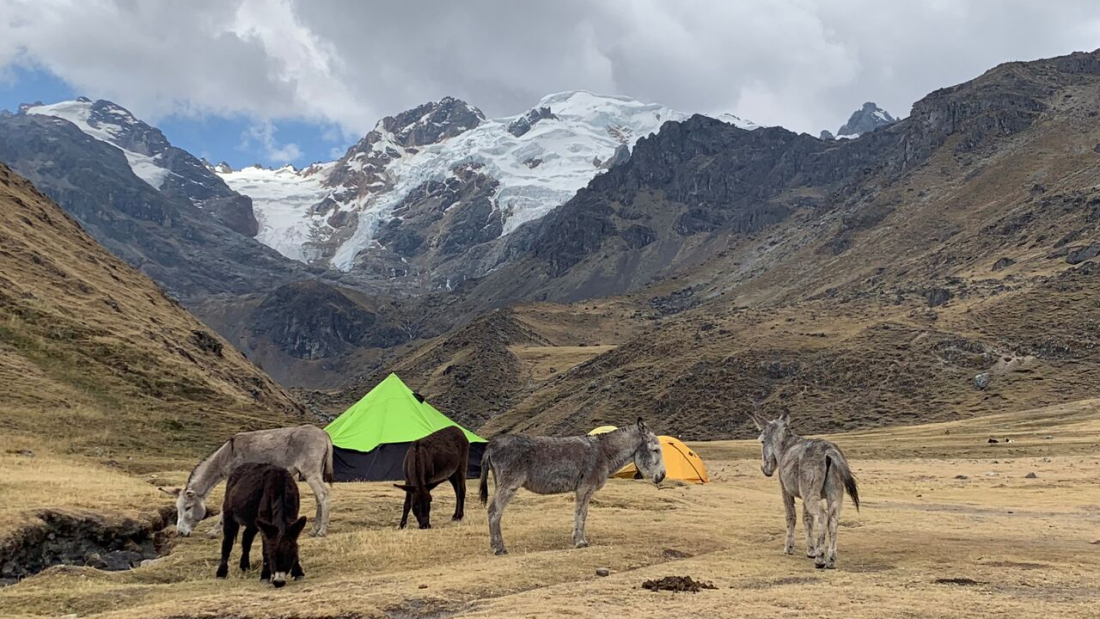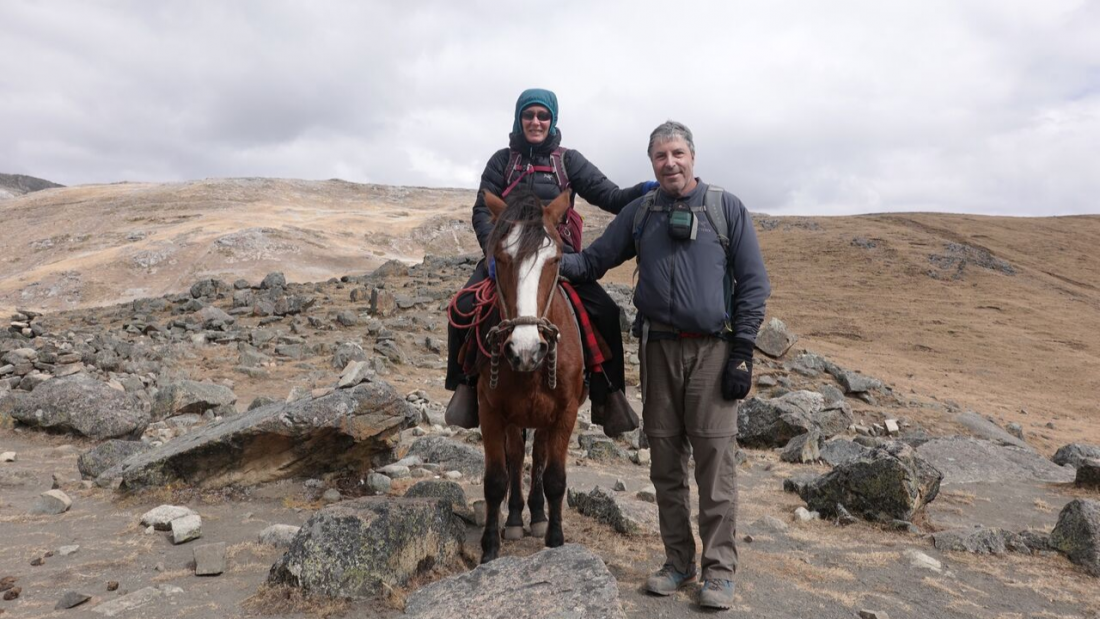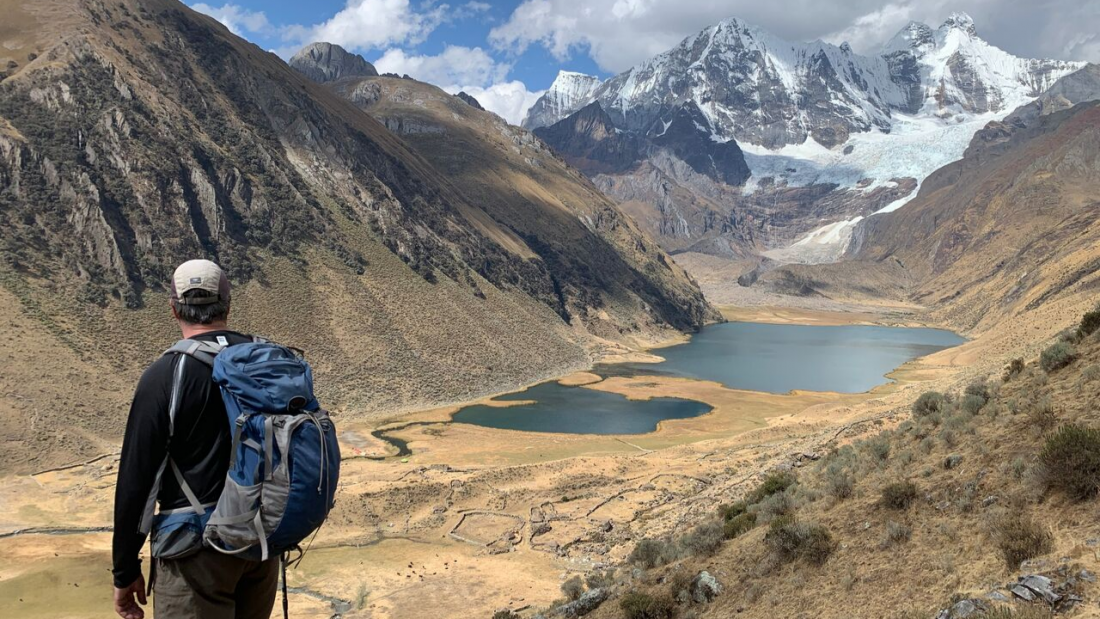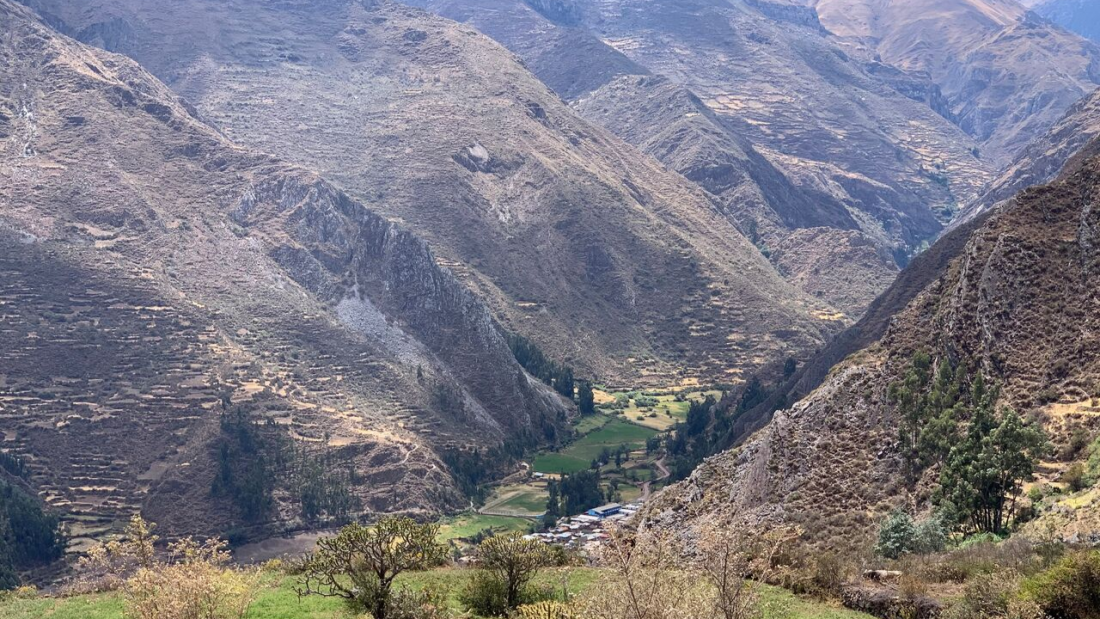The Huayhuash Trek in Peru is regarded as one of the most scenic treks in the world. The daily mountain and lake vistas are breathtaking. We completed the Classic Trek over nine days.
Huayhuash Trek Itinerary
Location and access
The trek is located near Huaraz, which is a seven to eight hour bus trip north of Lima. The trek starts at the village of Popca.
We completed the walk with a local and well-regarded trekking company, Eco Ice Peru. So we traveled to the start of the trek with private transport, but public buses are also available. The trip is approximately 4 hours and the mountain views along the way are spectacular.
During the Huayhuash Trek we were supported by one guide/ cook and a donkey driver with five donkeys and one horse, Papa.
The 120 km trek, including side trips, winds around the Cordillera Huayhuash range. The mountain range is only 30km long though! The Trek is usually completed in 10 to 12 days. As you are driving to Pocpa, you can see the range before you descend into the township of Chiquian.
Day 1 Huaraz (3100m) to Cuartelhuain(4,180m)
Travel from Huaraz. As we had acclimatised on an earlier walk we drove to the campsite at Cuartelhuain, rather than completing the 4 to 5 hour walk from Pocpa.
Day 2 Cuartelhuain(4,180m) – Cacanan Punta (4,700) – Mitcucocha (4,230m)
A gradual climb up to Cacanan Punta, our first mountain pass for the trek. We were accompanied by two local dogs who were excellent guides and companions. We were also treated to the sight of condors soaring above us at the pass.
Our views were a little obscured by the mist. But we were still treated to mountain, valley and lake views. The campsite at Micucocha had magnificent views of Mount Jirishanca and Mount Ninashanca.
5 to 6 hours is the average walking time.
Day 3 Mitcucocha (4,230m) – Punta Carhuac (4,650m) – Carhuacocha (4,140m)
Another day, another pass! A gentle climb through mountain meadows to the pass. Even though it is not a steep walk, it is slow going due to the lower oxygen levels.
The mountain views at the pass were so amazing of Yerupaja, Siula Grande, and Hirishanca that we took a short break in the sunshine to just enjoy the grandeur of these mountains.
An easy walk down to be surprised by another spectacular view – Lake Carhuacocha. This was our camp for tonight.
5 to 6 hours is the average walking time.
Day 4 Carhuacocha (4,140m) – Siula Pass (4,830m) – Huayhuash Camp (4,350m)
Beautiful lake views as we left our camp—sunrise with the reflection of the mountains in the lake. Magical!
Today’s walk can only be described as up, and up, and up. It is the most difficult days of walking that I have ever completed. But the mountain and glacial lake views are so beautiful that words cannot describe them.
Today’s walk passes the famous glacial lakes of Siula, Quesilococha, and Cangracocha. The Huayhuash Trek is renown for these lakes.
The walk up to the miradoor (viewpoint) is more like climbing a ladder at times! At 4,600m I found it physically, and at times, mentally challenging. I had no symptoms of altitude sickness, other than I was going so slow.
A well-deserved rest, and a few photos of the famous lakes (see top photo above). Then more climbing up to the pass.
A welcomed walk down to our campsite!
6 to 7 hours is the average walking time.
Day 5 Huayhuash Camp (4,350m) – Portachuelo Pass (4,750m) – Viconga Camp (4,360m)
More great mountain views of Puscanturpa and Trapecia on the way to the pass. Over the pass you cannot miss the Cordillera Raura. Wide-open views from the pass today.
There is quite a descent to Lake Viconga and then still some more walking until you reach camp.
There is a great gift waiting for you at camp – natural hot spring baths!
Our bodies just relaxed into the warmth and minerals of the water.
Average walking time 4 to 5 hours.
Day 6 Viconga Camp (4,360m) – Cuyoc Pass (5,000m) – Huanacpatay (4,200m)
A steady climb up to the pass today. And one of our highest too.
My final 100m of climbing was shared with our friend Papa (horse). I was walking okay but thought I would enjoy a horse ride more, and I did!
Big mountain views from the pass.
Decided that I would continue to ride Papa once we had all safely descended the very steep and slippery track down to the meadow.
There is an optional side trek today to San Antonio (5,200m), but we walked directly to camp. Only very strong walkers can complete the side trek and reach Huanacpatay on the same day.
Other groups we were walking with had allowed an additional day to complete the side trek. It would be worth considering because on a clear day San Antonio apparently offers spectacular views.
It took us about 6 hours to reach the camp.
Day 7 Huanacpatay (4,200m) – Huayllapa (3,600m) – Huatiac (4,300m)
A change of direction today. We headed down to the village of Huayllapa through farms before descending to the river.
The track is quite steep and very dusty in parts (see my trousers in the photo above). The views of the valley and the village in the distance were beautiful and a contrast to the arid hills and snow-capped peaks. We passed several productive agriculture properties. The water was being channeled from creeks and waterfalls.
The village of Huayllapa was very quiet when we reached it mid-morning. I wouldn’t advise changing your schedule to stay overnight in Huayllapa, as the campground is in the middle of the village. Although we were happy to visit and buy some fresh bananas and a couple of drinks!
Whilst it is a pleasant change to walk down, it usually means that you have to walk up. And we did for the next 2 hours.
The track to camp follows the waterway, which has been eroded and diverted in sections. Camped in a high mountain meadow with amazing views.
Average walking time 6 – 7 hours.
Days 8 & 9 Combined Huatiac (4,300m) – Tapush Pass (4,750m) – Angoschancha (4,450m) – Yaucha Pass (4,830m) – Jahuacocha (4,050m)
As days 8 and 9 are both relatively short, averaging (9 to 11 hours combined), we decided that with the help of Papa (horse) we could reach Jahuacocha by mid to late afternoon.
The track to Tapush Pass is gradual. It was an overcast day so our views were a little obscured. I enjoyed a relaxing ride on Papa to the Pass. Quite barren landscape today.
Another descent past Lake Susucuocha. Just after Angoschancha, we stopped for lunch. We could see the path ahead through the valley as it winded up the meadows towards the pass. We both had a turn riding Papa for some of the way. Thank you Papa!
Big views of mountains when we reached the pass, but the clouds were still covering some of the peaks.
A long but pleasant walk down to Jahuacocha. The last 1/2 hour of the track is very dusty but the valley and lake views are beautiful. Different to what we had seen so far.
Day 10 Jahuacocha (4,050m) – Llamac (3,300m) – Huaraz (3,100m)
Quite a flat walk through meadows today until the steep descent into Llamac. Mostly farmland but still beautiful views. We were guided by two local dogs who walked the entire 15km with us into the village.
4 to 5 hours walking time. Drive to Huaraz 4 hours.
The uniqueness of the Huayhuash Trek
The Huayhuash Trek is a remote high altitude wilderness experience. The trek starts at 4,180m, so it requires adequate acclimatisation before you start the trek.
Our acclimatisation included time in Cusco (3,400m) and also the completion of the Santa Cruz Trek (3 days above 3,700m).
Even with adequate acclimatisation we found sections of the Huayhuash Trek slow going, due to the lower oxygen levels. And you remain close to 4,000m for the entire trek.
The scenery is varied and you do get glimpses of native animals.
The mornings were very cold in late August when we completed the trek. I walked with my duvet jacket, beanie and gloves each morning for about 3 hours (7 to 10am).
Be prepared for any type of weather. We had light snow and rain on our last evening, yet a warm sunny afternoon to enjoy the spa baths at Viconga Camp.
There are many entry points to the main track, so you can vary your itinerary to suit your timeframe and fitness level.
You also have the option of horse riding too!
Please email me If you would like more information on the Huayhuash Trek.
You may also visit Eco Ice Peru website here.

